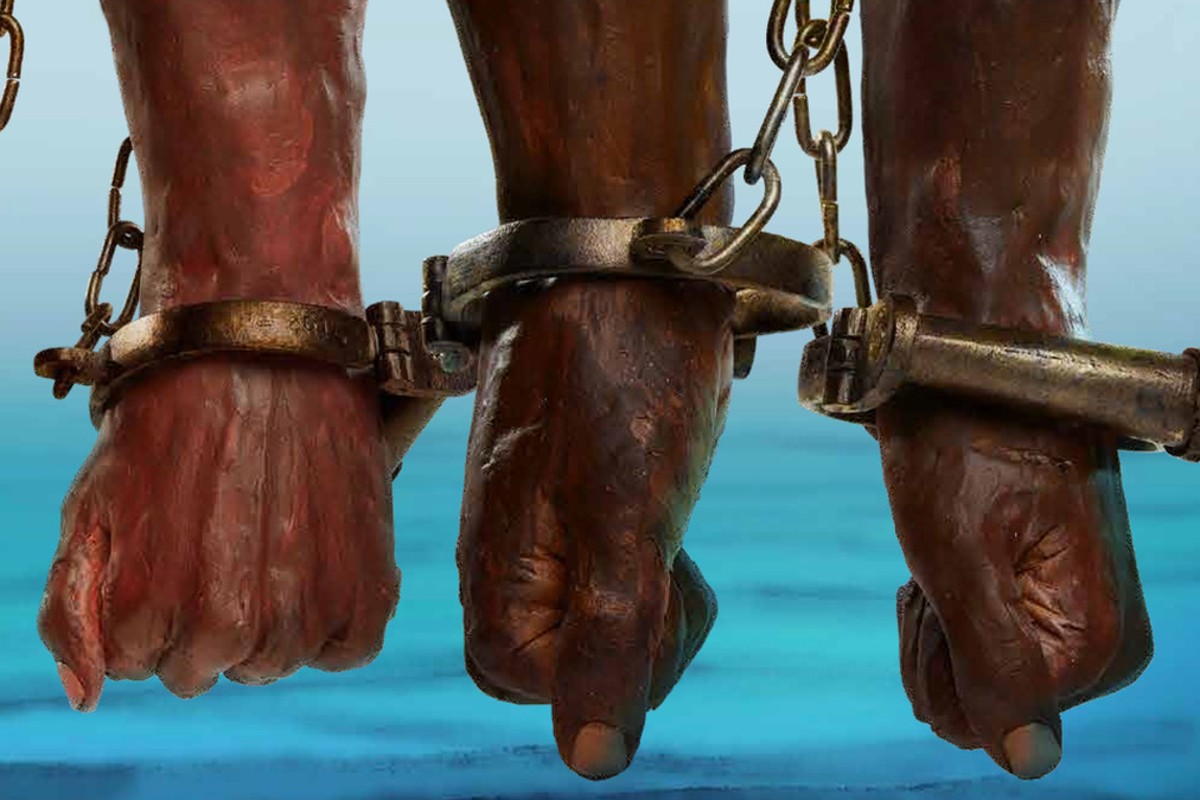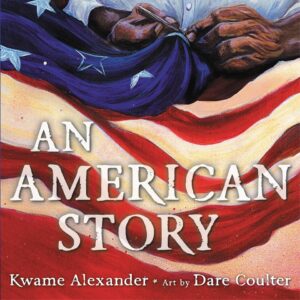
By Andy Brack | There’s a new book you should read. It’s a children’s book so it won’t take long.
 But it tells one American story that too many people don’t understand. In fact, it’s simply called An American Story ($18.99).
But it tells one American story that too many people don’t understand. In fact, it’s simply called An American Story ($18.99).
But what does that mean? It’s a safe bet many White people in America conjure stories of the Pilgrims landing at Plymouth Rock or settlers crossing the Atlantic Ocean to start colonies stretching from Georgia and the Carolinas to Massachusetts. Or they think of stories of families entering this country after long lines at Ellis Island or other seaports.
Not many, we bet, naturally consider the people who came to America on slaving ships. That reference just isn’t in their frame of thinking.
So what award-winning poet and children’s author Kwame Alexander has done is to flip the frame and highlight how the wretched trip from Africa to what became our nation is just as much of an “American story.”
 In Charleston, which will open the International African American Museum sometime soon, this perspective takes on even more import because, remember, 40% of enslaved Africans set foot on this continent in the Holy City.
In Charleston, which will open the International African American Museum sometime soon, this perspective takes on even more import because, remember, 40% of enslaved Africans set foot on this continent in the Holy City.
“How do you tell a story that starts in Africa and ends in horror?” begins the book, illustrated with gripping images by North Carolina artist Dale Coulter. “An unbelievable story about evil plans and big guns hiding in the night, waiting while the girls and the boys finish chores, play games, listen to old tales of trickster spiders and talking drums.”
Make no mistake: This book should not be construed or related to disputes over so-called “critical race theory.” It’s not about politics or hot-button campaign issues or overwrought wonks trying to figure out new ways to divide the country. This is a thoughtful book that tries to lead people to better understand how we got to where we are in the nation. It’s an exploration and explanation that may make many uncomfortable, but it also may help healing, boost acceptance and seed growth in the body politic.

Alexander wrote the book when his 4th grade daughter’s teacher, who happened to be White, was struggling to explain life in the 13 colonies – without talking about “the impact and trauma of slavery.” He eventually realized how anxious the teacher was about teaching about America’s history of slavery – mainly because she was never taught how to approach what is a sensitive subject.
“The underlying issue when it comes to teaching students about slavery and Black history is in general, most teachers — Black or White — are ill-prepared to do so,” said Alexander, 54, during an interview last month. “From different vantage points, they’re confused or ignorant about how to do it.”
Students suffer, he said, when they can’t learn about vexing issues like slavery that continue to haunt us today.
“This book is for all the teachers and parents trying to find their voices, trying to share a lesson that we all find so difficult to discuss.
“An American Story is a story for readers of all ages — a story of a people’s struggle, strength, horror and hope that needs to be told and understood by us all.”
Books like An American Story and the world-class museum coming to Charleston represent new, long-needed efforts to confront our past and help us to move beyond it. We need to stop seeing skin color as a way to divide. Instead, let’s consider it just like we consider the petals of flowers. We love them for their diversity of color – the red in roses, white in magnolias and yellow in Black-eyed Susans. So should it be with humans.
Andy Brack is editor and publisher of Statehouse Report and the Charleston City Paper. Have a comment? Send to: feedback@statehousereport.com.
















 We Can Do Better, South Carolina!
We Can Do Better, South Carolina!